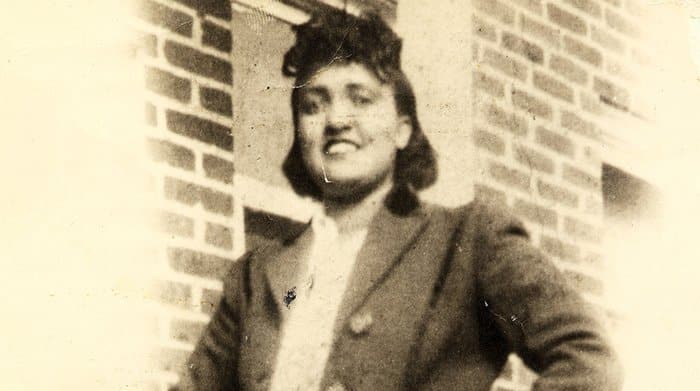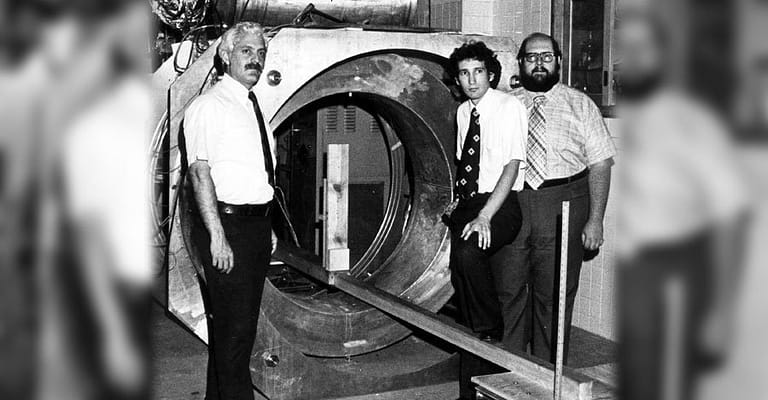The history of medicine is replete with groundbreaking discoveries and innovations that have transformed healthcare and significantly improved human life. From the serendipitous discovery of penicillin to the advanced genetic engineering techniques of today, each medical breakthrough has opened new frontiers in disease treatment, diagnostics, and patient care.
HeLa Cells (1951)

Henrietta Lacks, an African-American woman, unknowingly contributed to one of the most important tools in modern medicine: her cancer cells, known as HeLa cells. These were the first human cells successfully cloned and have been used extensively in medical research since the 1950s. HeLa cells have a unique ability to divide indefinitely in a laboratory setting, making them invaluable for studying cell biology, genetics, and developing various medical treatments. They played a crucial role in developing the polio vaccine, cancer research, AIDS research, and gene mapping. The widespread use of HeLa cells sparked important discussions about medical ethics, particularly regarding consent and the use of human biological materials in research.
Discovery of Penicillin (1928)

The discovery of penicillin by Alexander Fleming in 1928 marked a turning point in the field of infectious diseases. Prior to penicillin, bacterial infections such as pneumonia, syphilis, and rheumatic fever were often fatal. Fleming’s observation that the Penicillium notatum mold could kill bacteria led to the development of penicillin, the first true antibiotic. This discovery initiated the antibiotic era, profoundly changing medical practice by offering a powerful tool to combat bacterial infections. Penicillin’s impact during World War II was particularly notable, saving countless lives by effectively treating wound infections and preventing sepsis. Its introduction significantly reduced mortality rates from bacterial infections and laid the foundation for the development of other antibiotics, reshaping public health and leading to an increase in life expectancy.
First Successful Heart Transplant (1967)
The first successful human heart transplant, performed by Dr. Christiaan Barnard in 1967, marked a pivotal moment in medical history and the field of organ transplantation. This surgery demonstrated that it was possible to replace a failing human heart with a healthy one from a deceased donor, opening new avenues for treating end-stage heart disease. The success of this operation not only showcased the feasibility of heart transplants but also highlighted the importance of advancements in immunosuppressive medications, which are crucial for preventing organ rejection. It also had a broader impact on the field of transplantation, leading to improvements in surgical techniques, organ preservation, and postoperative care, ultimately saving countless lives and inspiring further research into transplantation of other organs.
Polio Vaccine (1955)

The development of the polio vaccine by Jonas Salk in 1955 was a major milestone in the fight against infectious diseases. Poliomyelitis, commonly known as polio, is a crippling and potentially deadly infectious disease caused by the poliovirus. The introduction of the vaccine drastically reduced the incidence of polio worldwide. Before the vaccine, polio outbreaks caused widespread fear and left thousands of children and adults with permanent paralysis. The vaccine’s availability led to large-scale immunization campaigns, effectively reducing the prevalence of the disease and paving the way toward its potential eradication. Salk’s inactivated polio vaccine (IPV) and later the oral polio vaccine (OPV) developed by Albert Sabin played crucial roles in public health, highlighting the importance of vaccines in disease prevention and control. The success of the polio vaccine is a testament to the power of scientific research and public health initiatives in combating infectious diseases.
Invention of the MRI Machine (1977)

The invention of the Magnetic Resonance Imaging (MRI) machine in 1977 by Dr. Raymond Damadian marked a revolutionary advance in medical diagnostics. MRI technology utilizes magnetic fields and radio waves to create detailed images of the body’s internal structures, offering a non-invasive method to visualize organs and tissues. Unlike X-rays and CT scans, MRI does not use ionizing radiation, making it safer for repeated use. This technology has greatly enhanced the ability to diagnose and monitor a wide range of conditions, including brain tumors, spinal cord injuries, stroke, and joint disorders. MRI scans provide unparalleled details of soft tissues, making them particularly valuable for neurological, musculoskeletal, and cardiovascular assessments. The development of MRI represented a significant leap in medical imaging technology, greatly improving the accuracy of diagnoses and the ability to tailor treatment to individual patient needs, ultimately contributing to better patient outcomes.
Discovery of the Structure of DNA (1953)

In 1953, James Watson and Francis Crick made a groundbreaking discovery by elucidating the double helix structure of DNA. This revelation was pivotal in the field of molecular biology and genetics. Understanding DNA’s structure was crucial in determining how genetic information is stored, replicated, and passed on from one generation to the next. This discovery laid the foundation for modern genetic research, leading to advancements in numerous areas, including the Human Genome Project, genetic engineering, and gene therapy. It transformed our understanding of hereditary diseases and genetic predispositions to various conditions, enabling the development of targeted therapies and personalized medicine. The discovery also had profound implications beyond medicine, affecting fields such as forensic science, biotechnology, and anthropology, and raising ethical and social questions about genetic manipulation and privacy.
Birth Control Pill (1960)

The introduction of the oral contraceptive pill in 1960 represented a significant milestone in reproductive health and women’s rights. Developed by Gregory Pincus and John Rock, the birth control pill provided a reliable method of contraception, giving women unprecedented control over their fertility and reproductive lives. This innovation had far-reaching implications, contributing to profound social and cultural shifts. It played a crucial role in the women’s liberation movement, allowing women greater participation in the workforce and higher education by enabling them to plan pregnancies and family size. The pill also impacted public health by reducing the incidence of unwanted pregnancies and associated complications. Its development marked a significant step in the field of endocrinology and pharmaceutical science, leading to further research in hormone-based medications and treatments.
Blood Typing and the First Blood Bank (1900s)
The discovery of blood groups by Karl Landsteiner in the early 1900s and the subsequent development of the first blood bank by Bernard Fantus in the 1930s revolutionized medical practice. Landsteiner’s identification of the A, B, AB, and O blood groups and the concept of blood type compatibility made blood transfusions safe and effective. Before this discovery, transfusions were often fatal due to immune reactions against incompatible blood. The establishment of the first blood bank by Fantus made stored blood readily available for transfusions, significantly improving emergency and surgical care. These advancements greatly reduced the mortality rate from blood loss and facilitated complex surgical procedures. Blood typing and blood banks have had a profound impact on medicine, saving countless lives and forming the foundation of modern transfusion medicine and hematology.
Cataract Surgery with Intraocular Lens Implantation (1949)

In 1949, Sir Harold Ridley revolutionized the treatment of cataracts with the development of cataract surgery involving intraocular lens implantation. Before this innovation, cataract surgery often left patients with significantly impaired vision, requiring thick glasses or contact lenses. Ridley’s introduction of the artificial intraocular lens (IOL) transformed cataract surgery outcomes, allowing patients to regain clear vision. This procedure involves removing the clouded natural lens and replacing it with a synthetic lens, restoring normal focusing ability. This advancement has had a profound impact on ophthalmology, significantly improving the quality of life for millions of patients worldwide.
Discovery of Insulin (1921)

The discovery of insulin in 1921 by Frederick Banting and Charles Best was a monumental breakthrough in the treatment of diabetes. Before insulin, a diagnosis of Type 1 diabetes was essentially a death sentence, with patients often succumbing to the disease within a few years. Banting and Best’s discovery transformed diabetes from a fatal condition into a manageable chronic illness. Insulin therapy allowed people with diabetes to lead longer, healthier lives by controlling their blood sugar levels. This discovery not only saved countless lives but also spurred further research into the hormonal regulation of the body, the pathophysiology of diabetes, and the development of improved forms of insulin and delivery methods. The impact of insulin extended beyond medicine into societal and economic realms, altering the life trajectories of individuals with diabetes and contributing significantly to our understanding of endocrinology and metabolism.
Cochlear Implants (1960s-1970s)

Cochlear implants, developed primarily in the 1960s and 1970s, represent a groundbreaking advancement in the treatment of severe hearing loss and deafness. Unlike hearing aids, which amplify sound, cochlear implants bypass damaged parts of the ear and directly stimulate the auditory nerve, providing a sense of sound to individuals who are profoundly deaf or severely hard of hearing. The development of these implants has significantly improved the quality of life for many, allowing for better communication and integration into the hearing world. Children who receive cochlear implants at a young age can develop language skills more effectively, and adults who have lost their hearing can regain the ability to communicate more easily. The invention of cochlear implants is a milestone in auditory science and medicine, offering a life-changing solution for many with severe hearing impairments.
Smallpox Eradication (1980)
The eradication of smallpox in 1980 is a landmark achievement in public health and medicine. Smallpox, caused by the variola virus, was a highly contagious and deadly disease, responsible for countless epidemics throughout history. The global eradication campaign, led by the World Health Organization (WHO), began in 1967 and involved widespread vaccination and surveillance strategies. The last known natural case was in 1977, and in 1980, the WHO officially declared smallpox eradicated. This success marked the first time a human disease was completely eliminated through vaccination efforts. The eradication of smallpox not only saved millions of lives but also demonstrated the effectiveness of global health collaboration and vaccination as a public health tool. It set a precedent for future disease control efforts and remains a guiding example of what can be achieved through coordinated international cooperation and commitment to public health initiatives.
Conclusion
The exploration of medical marvels showcases the extraordinary journey of medical science through the ages. These breakthroughs, ranging from the development of life-saving vaccines to revolutionary surgical techniques, epitomize human ingenuity and dedication to improving health and longevity.

